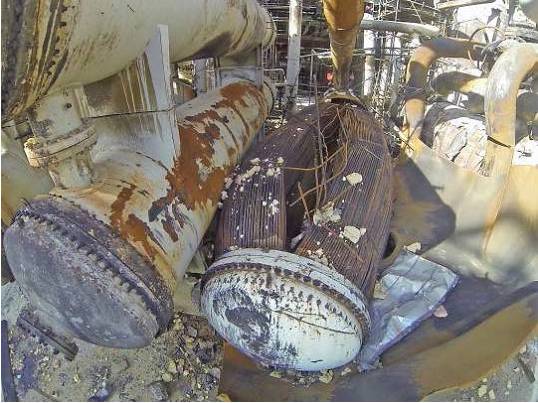
Incident Report Subject: US - Metallurgical Testing Key in Geismar Plant Explosion Date of Email report: Sun 28/07/2013 Report Detail:
Dan Tillema, team leader for the U.S. Chemical Safety Board’s inquiry into the Williams Olefins fire, said “a lot of our conclusions” are expected to come from the planned metallurgical tests aimed at understanding how and why the exchanger failed. “That’s where it looks like the real answers are going to come from,” he said. Metallurgical tests typically consider the strength, chemical makeup and other factors in the metals used in equipment and why those metals may have failed. The safety board is an independent federal agency that investigates industrial chemical accidents, the agency website says. Tillema said investigators were able to get a close look at the exchanger June 27, taking photographs and video, after overhead hazards were mitigated. But they still had to stay about 10 feet away due to continuing structural concerns, he said. This week, metallurgists who work with the safety board and the U.S. Occupational Safety and Health Administration, which is also investigating the blast, are expected to visit the site to develop testing plans. Tillema said the plans are expected to include determining whether and how to remove the exchanger for off-site tests. He said it is hard to know how long the metallurgical tests will take but added investigators have a goal of having at least some of it done in three to four months for OSHA. By statute, the workplace safety regulator has six months to finish its investigation, OSHA officials have said. Tom Droege, spokesman for the Tulsa, Okla., based Williams, said the company is cooperating with investigators but it would be inappropriate “to discuss various aspects of the investigation.” He added that Williams has personnel on site planning repairs, but it is too soon to say when those plans would be ready. “It’s just too early to know a time line right now,” he said Monday. Additional Documentation:
|

